May 14, 2024
Particularly for active transportation modes like walking and biking, transportation in urban areas is not just about providing a way to move from one place to another; it’s about providing a route that feels both safe and comfortable. For people who bike, this means having access to a network of facilities that they perceive as safe—all the way through. In high-conflict areas, this challenge is especially pronounced.
High-conflict areas are typically at intersections where multiple transportation modes converge, leading to a mix of directions, speeds, and/or volumes. These areas are notorious for creating stressful conditions for people biking. It’s important to consider the intricacies of high-conflict areas when designing bike facilities to promote safety.
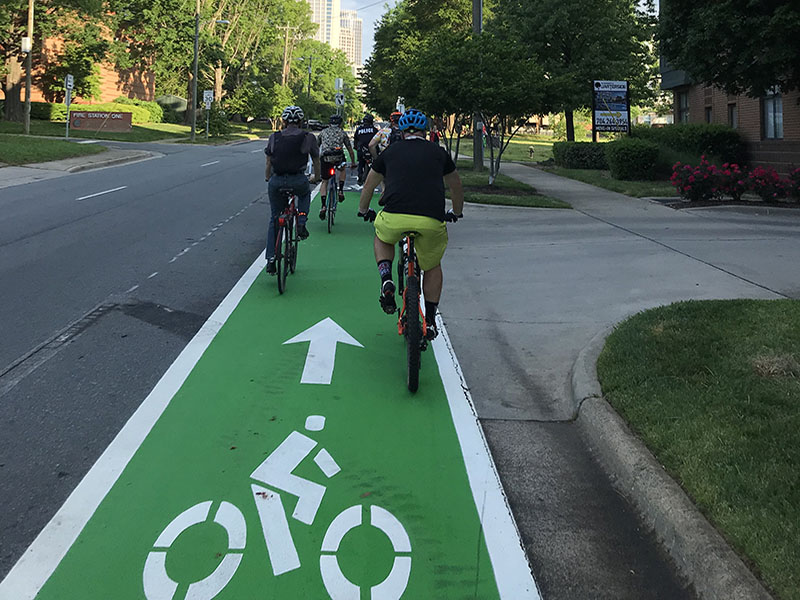
A basic human condition is someone will only take a trip via bike if they feel safe for the entire trip.
The Entire Trip Matters
When it comes to choosing a transportation mode, a basic human condition is someone will only take a trip if they feel safe for the entire trip. Having a “mostly comfortable” route often isn’t enough; one stressful intersection or crossing can dissuade someone from choosing biking as their mode of travel, even if the rest of the route is a pleasant ride. This is why high-conflict points are worth our time and attention!
Design Principles for Safety
A guiding principle highlighted in NCHRP Research Report 1036, which provides guidance on how to better use our streets to support community goals, like safety and access, is that this is not a zero-sum game. In other words, we cannot try to design for everyone, because then it won’t really be comfortable for anyone. The reality is every design decision comes down to tradeoffs—and it is important to daylight the impacts of operations on human life and safety.
The key strategies for designing for safety come down to removing conflict points where possible, and minimizing conflict points where they must exist.
“The best conflict is the one that doesn’t exist.”
The best safety countermeasures are usually those that remove conflicts altogether. Conflicts can be removed through a number of different methods. Because conflicts often occur at intersections, there are several types of intersection treatments that should be considered for removing conflicts.
Roundabouts are an FHWA Proven Safety Countermeasure because they reduce the number of potential conflict points at an intersection in comparison to a signalized intersection. They can also lower speeds and calm traffic, reduce delay, and simplify pedestrian and bike crossings to a single direction. By simplifying the number of conflict points and reducing speeds through those conflict points, roundabouts can improve safety and reduce crashes that result in serious injury and death.
Protected intersections separate bicyclists from right-turning cars. Corner islands slow right-turning vehicles, shift bicyclist paths, and improve sight distances for all users. This configuration also creates waiting areas for all users, including right-turning vehicles yielding to people walking and biking at the crosswalks. Protected intersection treatments can be applied at signalized or unsignalized intersections.
Phase separation creates another opportunity to reduce conflicts at signalized intersections. While protected left turn phasing has become more widely adopted, there are other opportunities to provide phase separation as well. Protected right turns can be utilized to separate right turning drivers from people walking and biking. For a right turn, drivers are given a sign indicating no right turn on red when people walking and biking go straight through the intersection. This can be an alternative to having the bike lane cross over the right turn maneuver. If a right-turn lane exists, then the right turns can be separated through a red signal arrow display from the pedestrian and bike crossing. By separating this conflict, we can create a facility more comfortable for all ages and abilities. Other phase separated opportunities to separate conflicts include pedestrian scrambles and diagonal bike crossings. In both examples, drivers are given a red light while people walking or biking cross.
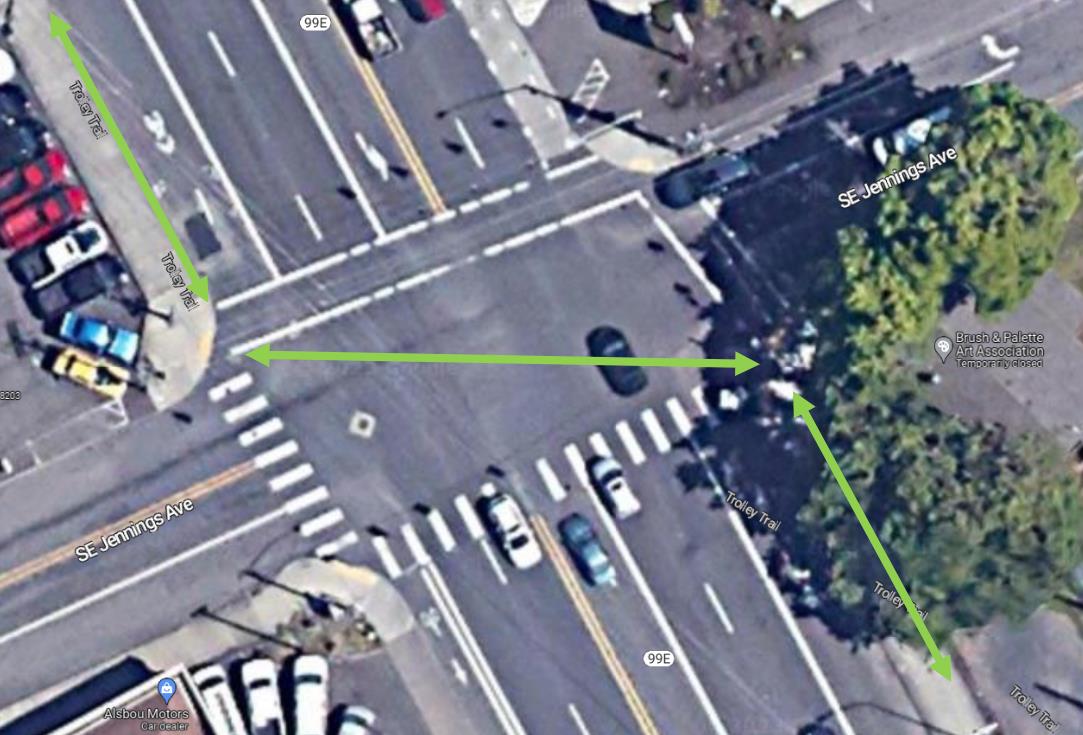
On the McLoughlin Boulevard Investment Strategy project, Kittelson recommended widening the Trolley Trail to the intersection and constructing a diagonal bike crossing to provide a protected movement for people biking from NW to SE across the intersection to stay on the Trolley Trail.
When we can’t remove conflict points altogether, there are other strategies that can still reduce the likelihood of fatal and serious injury crashes. Some strategies for minimizing and managing conflicts include:
- Slowing speeds at the conflict by introducing traffic calming features (chicanes, street trees, or other treatments) or changing the roadway geometry. On or near highways or roadways that were built resulting in higher speeds, wide angles or turning radii should be reduced and superelevations may need to be removed.
- Reducing exposure at pedestrian and bike crossings by reducing the curb-to-curb width through reduced turning radii, curb extensions, or the addition of refuge islands.
- Improving visibility, including through intersection daylighting, or removal of obstacles near the conflict point and changing intersection geometry to improve sight between modes or other users.
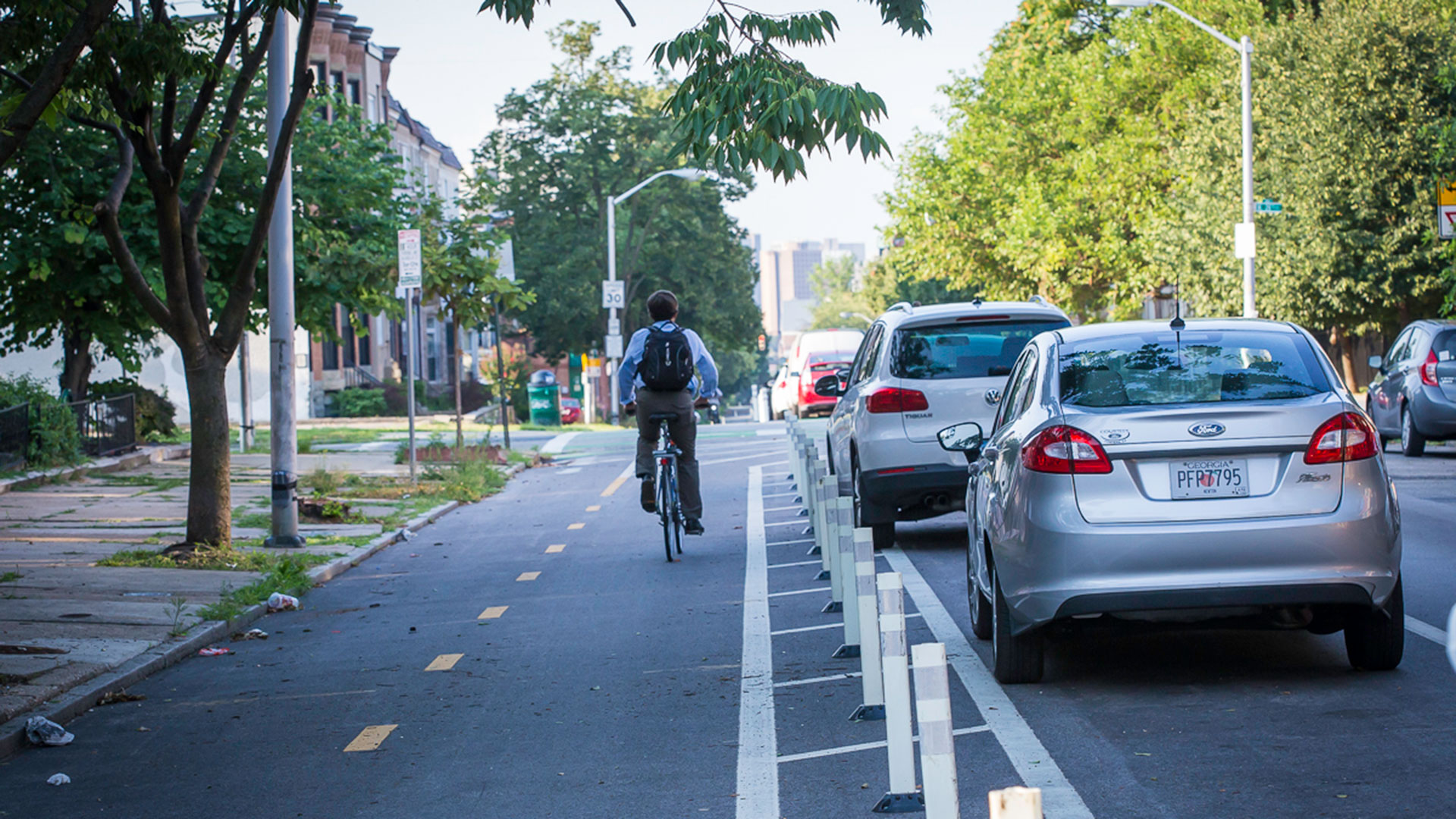
By implementing these principles, cities can improve the overall quality of their transportation networks and support a shift towards more sustainable and active modes of transportation.
Some project examples that exemplify these design principles, as well as highlight the importance of the collaboration between the design team, the client, and the community for successful outcomes are in Charlotte, North Carolina and Corvallis, Oregon.
For the Charlotte, NC Uptown Cycle Track, the City of Charlotte implemented a few pop-up cycle tracks to get community buy-in and raise awareness that things were changing. When it came time to design the permanent cycle track, we had the opportunity to get involved with design, which included navigating some tricky conflict points.
In these high-conflict areas, the project team used the principle of removing unnecessary conflicts and controlling the remaining ones with temporal and spatial separation. In one location, we needed to bring the bike lane across a freeway ramp, where there was a concerning right turn that placed bicyclists in front of cars exiting the freeway. After working through a variety of design alternatives, we decided to move the bike crossing to the other side of the freeway ramp and use a dedicated bike signal to avoid the high volume and high-speed right turn. Overall, Charlotte’s Uptown Cycle Track has been a huge success and is heavily used by bicyclists.
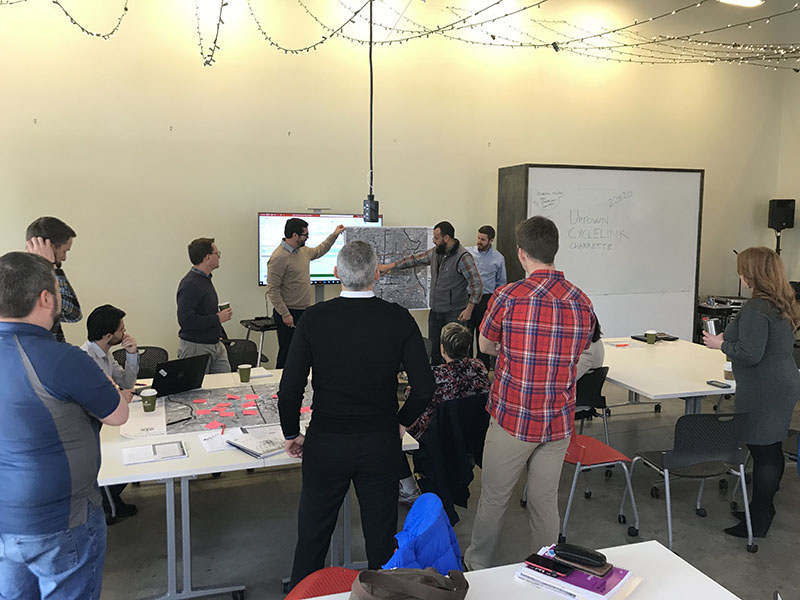
We led a series of in-house trainings on bike signal and intersection design with CDOT staff to review to build a collective understanding of the options and principles to guide design decisions. for the Charlotte Uptown Cycle Track.
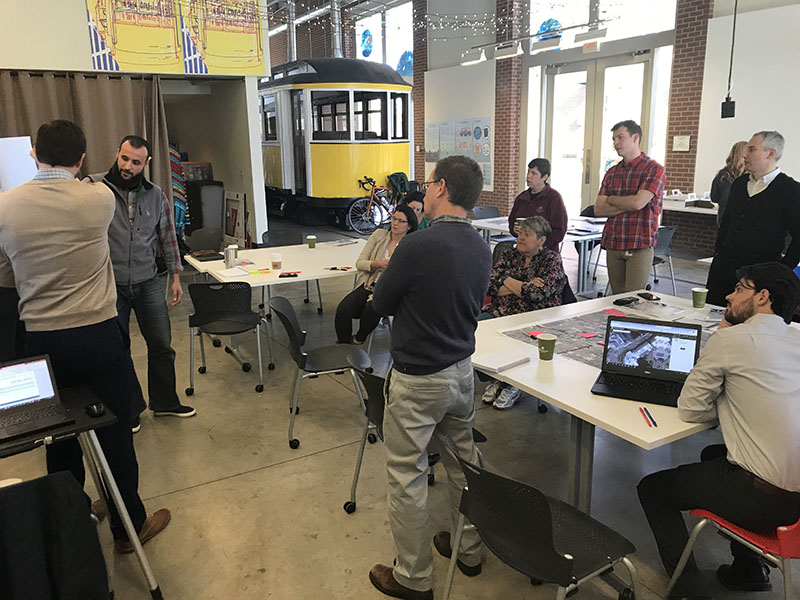
We then held a workshop with the same team members to prepare concept design alternatives at intersections with high conflicts.
And in Corvallis, OR, we are developing a plan to improve walking and biking safety along a highway that has built up into an urbanized community. There is a system interchange where this corridor connects to OR 34, which currently creates high speed conflict points for people biking along the corridor. For this project, our team is recommending:
- Repurposing a travel lane into a protected bike lane and adding numerous enhanced crossings along the corridor.
- Urbanizing the existing interchange by replacing an off-ramp that merges onto the corridor with a signalized intersection. This will also allow signal separation between people biking across the existing on-ramp and drivers.
- Adding a roundabout at an off-ramp to reduce speeds at pedestrian and bike crossings, and create a gateway for people travelling into the community.
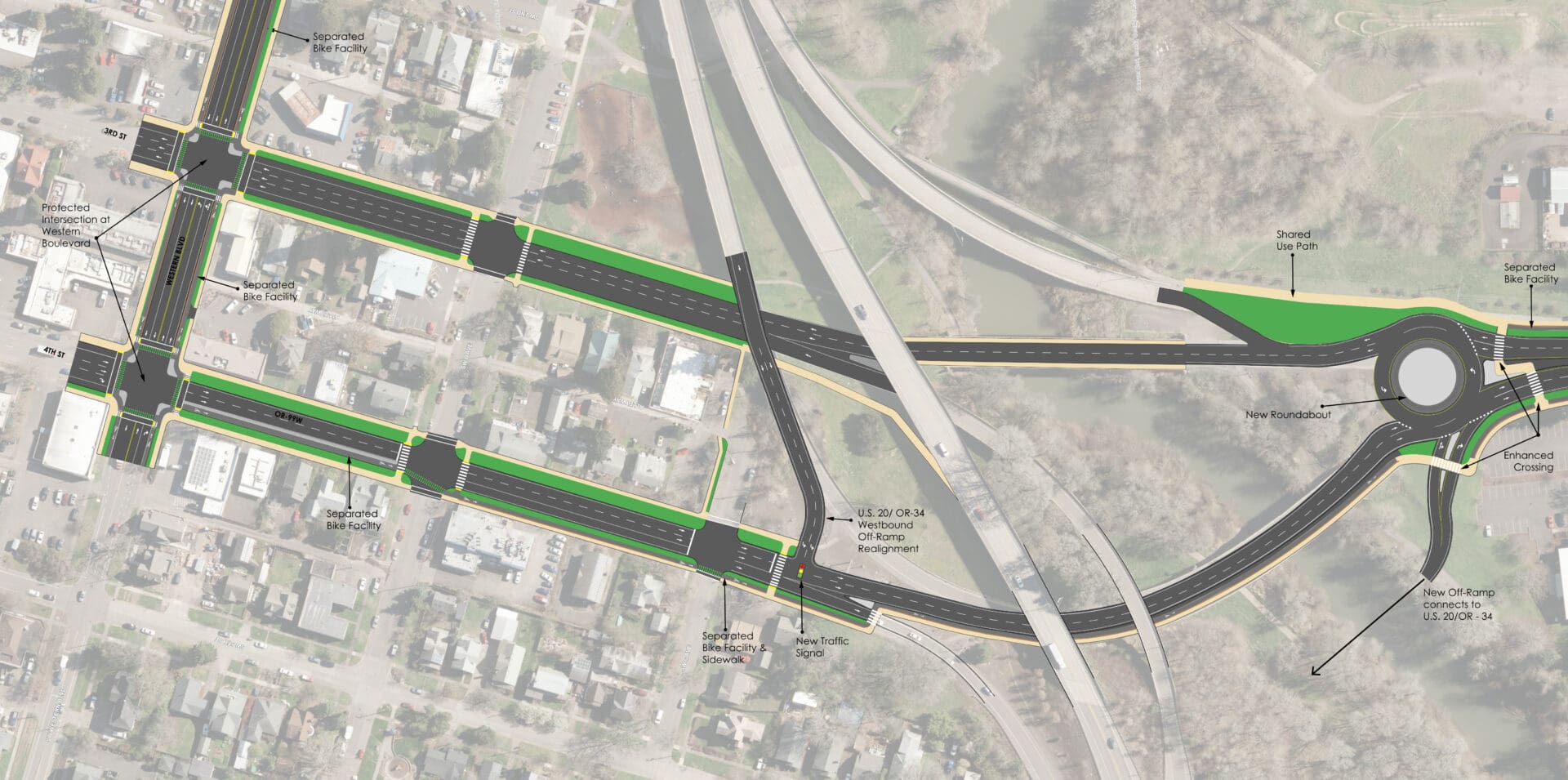
Recommendations for 99W in Corvallis, Oregon including protected intersections, space reorganized for protected bike lanes, removed conflicts and slowed speeds through signal separation at a realigned offramp, enhanced crossings, and slowed speeds at a roundabout marking the gateway into south Corvallis. Developed by Kittelson.
These design principles are not only about creating a safe space for bicyclists but also about promoting a culture of bicycling by making it a more comfortable and appealing option for everyone.
By implementing these practices, cities can improve the overall quality of their transportation networks and support a shift towards more sustainable and active modes of transportation. Reach out if you’d like to learn more!
